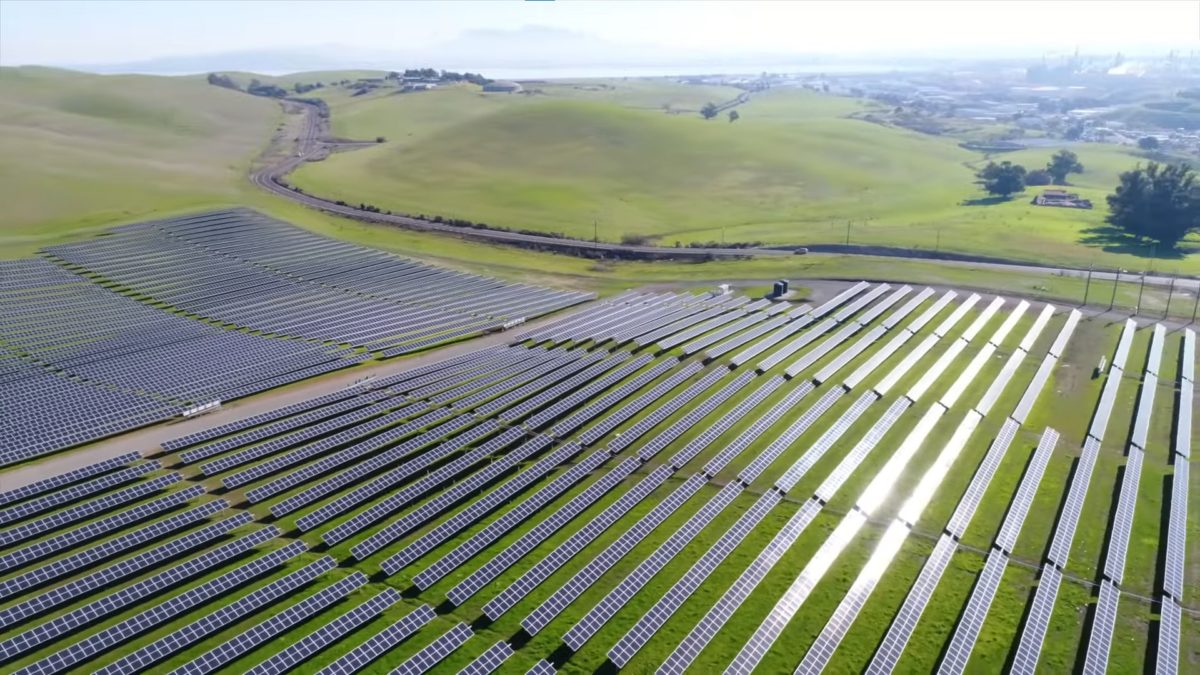Local Green Saver, a program of Pacific Gas & Electric (PG&E), is designed to bring the benefits of solar energy to residents in disadvantaged communities. Renewable Properties, a developer and investor in small-scale utility and community solar projects based in San Francisco, recently signed power purchase agreements (PPAs) for five projects to be built under this program with PG&E.
The projects total nearly 30 MW and are part of California’s Disadvantaged Communities (DAC) and Community Solar Green Tariff (CS-GT) programs enacted by AB327 in 2013. CS-GT, which PG&E branded “Local Green Saver”. The program is designed to promote the installation of community solar projects in disadvantaged communities, as defined by CalEnviroScreen. Eligible residents who subscribe benefit from 100% off-site solar power and receive a 20% bill credit on their PG&E bill.
“Through these Green Tariff projects, Renewable Properties is bringing solar energy to communities that have historically been left out of the clean energy transition, while being disproportionately affected by pollution and climate change,” said Brian von Moos, chief development officer of Renewable Properties. “The projects will allow low-income families to save on their electricity bills, even if they can’t put solar on their own roof.”
The five projects will fulfill the remaining capacity of PG&E’s Disadvantaged Communities Green Tariff program. They will generate enough energy to power over 5,345 homes and offset over 43,397 tons of CO2 annually. Initially the projects will not include energy storage, but it potentially could be added in the future.
The first three projects, East Cleveland Solar and Avenue 26 Solar Phase I and Phase II, will commence construction in the early Spring of 2023 and are expected to be completed by the end of 2023. The East Cleveland Solar project will be built in Merced County, Calif. and produce enough energy to power 748 homes per year and offset 5,938 tons of CO2 annually. Avenue 26 Solar Phase I and II will be built in Madera County, Calif. Together, they will offset 16,708 of CO2 annually and produce enough energy to power 2,105 homes.
The 7.0 MW Althea Avenue Solar project in the County of Fresno, Calif. will begin construction at the end of 2023, and is estimated to produce enough energy to power 1,182 homes per year and to offset 10,347 tons of CO2 annually. The project is expected to be completed by September 2024.
Renewable Properties will also build the Canyon Road Solar project in Merced County, Calif., scheduled to commence construction in March of 2024 and also be completed by the end of the year. The nearly 7 MW project will produce enough energy to power 1,310 homes per year and to offset 10,404 tons of CO2 annually.
Founded in 2017, Renewable Properties specializes in developing and investing in small-scale utility and community solar and storage energy projects throughout the United States. The company is active in 16 states and has over 650 MWs of solar under development with over 115 MWs under construction or in operation. In December 2022, for example, Renewable Properties acquired a 40 MW community solar portfolio in Maine from NextGrid.
California recently passed AB 2316, the Community Renewable Energy Act, which is currently being developed by the California Public Utilities Commission (CPUC). The new law creates a community renewable energy program, which includes community solar-plus-storage, to overcome access barriers for nearly half of Californians who rent or have low incomes as it includes a requirement that 51% of the program serves low-income customers and incentivizes incorporating energy storage with community solar projects. The law was passed just after California slashed incentives for rooftop solar, while the federal government opens up funds via the IRA to boost cleantech over the next decade.
The Biden Administration set a goal this year to sign up 5 million community solar households, achieving $1 billion in bill savings by 2025. The community solar model only represents about 8% of the total distributed solar capacity in the nation. This target would entail a jump from 3 GW installed capacity to 20 GW by the target year.
This content is protected by copyright and may not be reused. If you want to cooperate with us and would like to reuse some of our content, please contact: editors@pv-magazine.com.









By submitting this form you agree to pv magazine using your data for the purposes of publishing your comment.
Your personal data will only be disclosed or otherwise transmitted to third parties for the purposes of spam filtering or if this is necessary for technical maintenance of the website. Any other transfer to third parties will not take place unless this is justified on the basis of applicable data protection regulations or if pv magazine is legally obliged to do so.
You may revoke this consent at any time with effect for the future, in which case your personal data will be deleted immediately. Otherwise, your data will be deleted if pv magazine has processed your request or the purpose of data storage is fulfilled.
Further information on data privacy can be found in our Data Protection Policy.